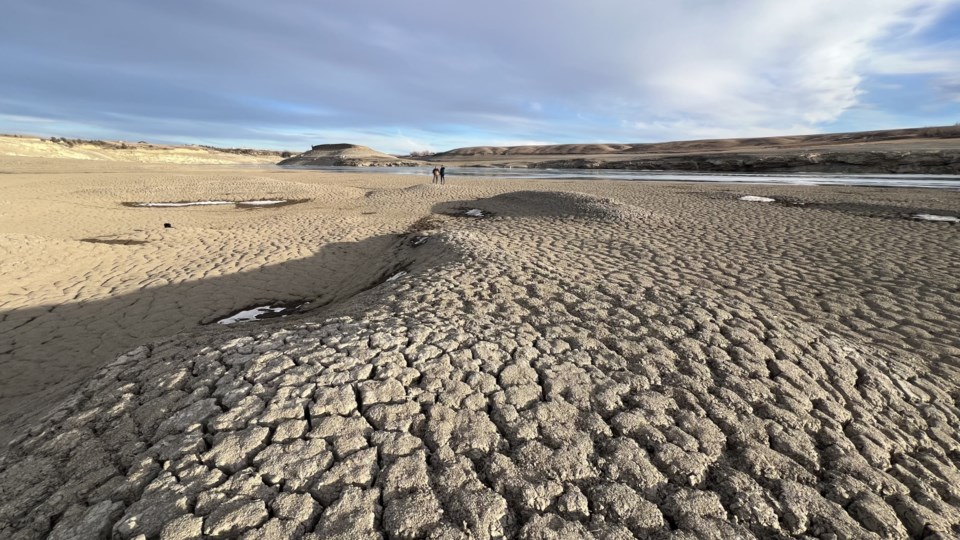With Alberta’s Emergency Statutes Amendment Act, Bill 21, now in force, the provincial cabinet now has authority to direct the transfer of water between major basins in response to water-related emergencies like drought.
But experts say if untreated surface water is moved, the river's flora and fauna could travel with it and possibly disrupt the balance of the receiving ecosystems.
The province says these transfers would only occur as a last resort for the purposes of human health, raising animals, or public safety needs. Concerns have been raised that these expanded powers come with significant environmental risks, and limited accountability measures.
Prior to the Bill 21 amendments, the Alberta Water Act required the legislature to pass a bill to move water between major basins in the province. If a water emergency is declared, cabinet can now direct these temporary transfers without debate or public consultation.
“Under Section 48 of the Water Act, it says that there must be public consultation. It doesn't really say in the Act what that public consultation has to be, but just by virtue of having to pass a piece of legislation, there is going to be public awareness around it,” said Brenda Heelan Powell, staff counsel with the Environmental Law Centre.
“(Bill 21) is removing that very high-level, or high-profile approach to approving inter-basin transfers and just making it a more standard type of license that might get issued.”
Transfer of untreated water between basins
Since the Water Act was introduced in 1998, there have been only seven special authorizations of inter-basin water transfers, such as the piping of potable water from the North Saskatchewan River Basin to residents in Parkland County and Lac Ste. Anne County in 2020. In all cases, the transfers were of treated water.
In a water-related emergency, cabinet can authorize the transfer of both treated and untreated water, “but only in the area of the emergency and only while the emergency is occurring,” said Ryan Fournier, press secretary to the Minister of Environment and Protected Areas of Alberta.
When untreated surface water is moved, the river flora and fauna could come with it, risking the introduction of invasive species or disrupting the balance of sending and receiving ecosystems, said Lorne Fitch, a professional biologist who spent 35 years working as a provincial fish and wildlife biologist
“This solution to drought requires an environmental impact assessment, a thorough look at what the implications of moving water south might be, even on a temporary basis,” he said.”
The prospect of diverting water to drought-stricken regions of the province, such as through the building of a pipeline, “is an engineering solution, and it ignores ecological issues, especially that of limits and thresholds,” Fitch said.
“These so-called temporary diversions assume there is a surplus of water somewhere that can be used where it is scarce,” he said. “Drought doesn't favour or inflict itself on just one portion of Alberta. It is, and will be in the future, universal.”
“Instead of having a drought strategy in Alberta that has been planned for recognizing what the impacts of climate change have been and will be – the fact that we have river flows that are declining in watersheds in the north, you have glaciers that are melting and may be gone in as short a time as the next few decades – what we're seeing is a bunch of knee-jerk tactics. And this Bill 21 is exactly that.”
Climate change resulting from the burning of fossil fuels is expected to make future droughts in Alberta more frequent and more severe. As the impacts on river flows in southern Alberta worsen, Fitch said he is concerned that “these temporary diversions could have an annoying propensity to become permanent.”
Fournier said water quality, aquatic organisms, invasive species, and disease are all concerns that would be factored into a decision to transfer water or issue water licenses. If an inter-basin diversion requires a structure or canal “with a capacity of more than 15 cubic metres per second, it would trigger an environmental impact assessment.”
Municipalities cut out of emergency decisions
The Rural Municipalities of Alberta (RMA) has taken issue with how Bill 21 cuts municipalities out of the decision-making process, and exempts decisions made during a water emergency from appeal.
“The RMA is opposed to allowing inter-basin water transfers except in the most dire of situations. As written, Bill 21 opens the door to transfers in situations where other solutions may exist,” RMA President Paul McLauchlin said in a news release.
“Speed matters in emergencies, but so does making the correct decision, especially given the environmental and public health impacts of controlling water.”
Fournier said the exemptions in the bill allow the province to take immediate action during emergencies.
Demand side of water scarcity
Alberta’s strategies for coping with drought largely focus on supply issues, like increasing the amount available for use in a region. These strategies are attempts to keep up with development levels “without recognizing that, particularly in southern Alberta, we have exceeded limits,” Fitch said.
“What we need to work on is not the supply side of water, but the demand side of water, and start to live within our means.”
Along with the increased municipal water use from Alberta’s record population boom, there are several water-intensive projects on the horizon that will rely on the same dwindling reservoirs.
Alberta has more irrigated area than anywhere else in Canada, and most of the 1.8 million irrigated acres are in southern Alberta. In 2021, the province, Canada Infrastructure Bank, and 10 irrigation districts announced $933 million in funding for irrigation infrastructure to expand production and storage.
The province also hopes to become the destination location for companies looking to set up massive AI data centres, which use significant amounts of water for cooling servers and energy production.
Without addressing the causes of drought and existing strains on resources, “expansion plans are just dreams that are not based in reality,” Fitch said.



